Hello everybody!
It’s been two weeks since my last post and let me start with an update on something mentioned there. I showed you this image of an object that I dragged up with a magnet from my suspected wreck site.
Since then, I’ve put the artifact in a hydrolysis cell to reduce the corrosion and now I can identify it. It’s not a nail!
Here’s some images that tell the story.
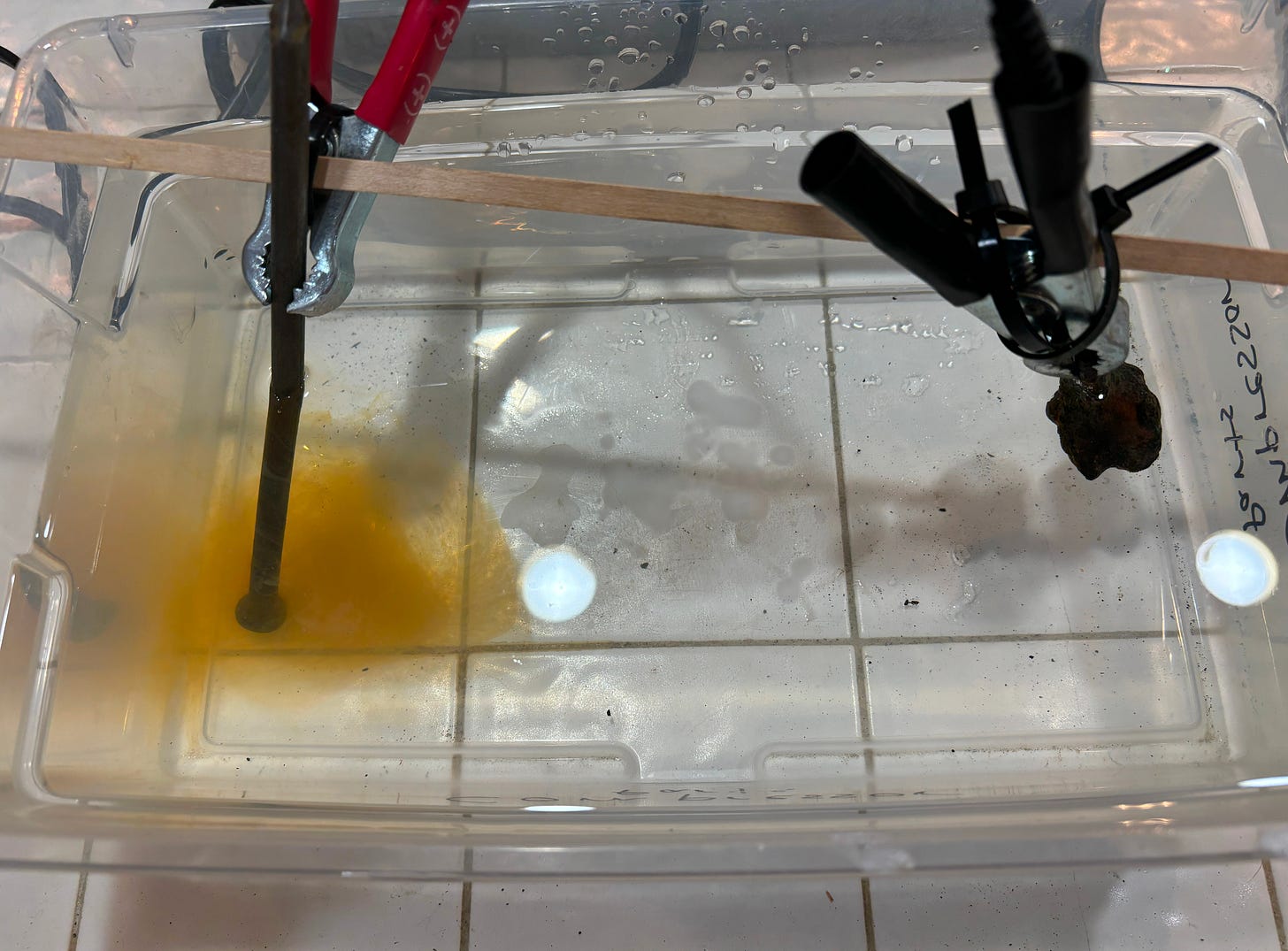
So, it appears that is two, small diameter, stranded iron cables joined by a fastener that appears to be a small U bolt. It is likely part of a longer cable with the end formed into a loop for attachment.
Is this part of America? My answer is perhaps, but not certainly.
It was found in the area mentioned in post 24.1 where the wreck likely lies. Wire rope was invented by a German mining engineer in the early 1840s and by 1868 was in wide use around the world. X-ray diffraction analysis show that this artifact has a very high iron content, greater than 98.5%, so it is not made of a modern alloy like stainless steel. As you can see from the photos, the amount of corrosion was great, so it’s been in this location for many, many years. The fastener is consistent with what would have been used back in the day, not a crimpled metal band like we do today. So, I don’t see anything that would rule it out, but given the small diameter, it certainly is not part of the hog chains which were used as structural support for the hull to deal with the weight of the boilers and engines. I wish I could say its convincing evidence, but it’s simply not. At best, it is supportive.
I’ve been out on the water only a few times over the past two weeks, with other life priorities superseding. But I have a couple more hours of bottom video to look over and I am making progress on the method to plot the submersibles course and match that to the images I see. The area I am looking at currently seems to have more silt-covered features than we saw just a few hundred yards west last year. That’s encouraging and I believe these two sites, about 300 feet apart, are worth diving on. I expect to do that in October.
In the meantime, I need to decide whether to continue to film these two areas or to broaden the search and move to other spots in my high probability zone. Homing in pursues the hopes of finding more convincing evidence and pinpointing dive locations while broadening offers greater coverage. It all hinges on the probability is strong enough that these are observations of America’s wreckage. Time is running short for diving, and I want to spend my river time productively. I[m interested in your hunches.
In closing, perhaps some of you saw the article in a recent Wall Street Journal about Steve Libert, the retired security analyst who has been on an almost lifelong search for Le Griffon, French explorer Robert La Salle’s ship, which was lost in Lake Michigan in 1679. I certainly identified with most of his experience. But unfortunately for him, he’s run afoul of Michigan officials and has experienced some “legal hardship”. Yikes!
I will be putting out a field dispatch for paid subscribers this week detailing the search technique and videos.



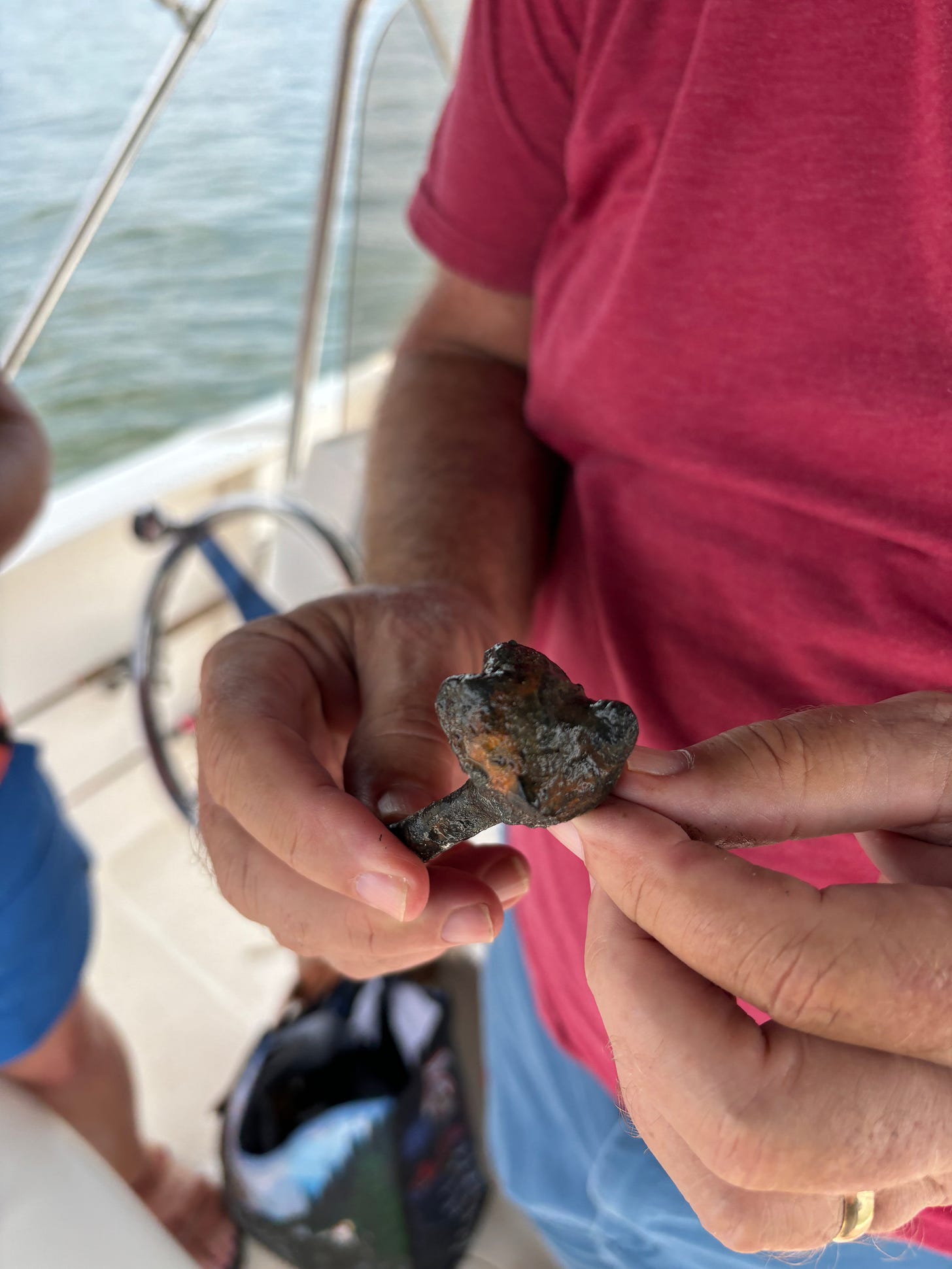
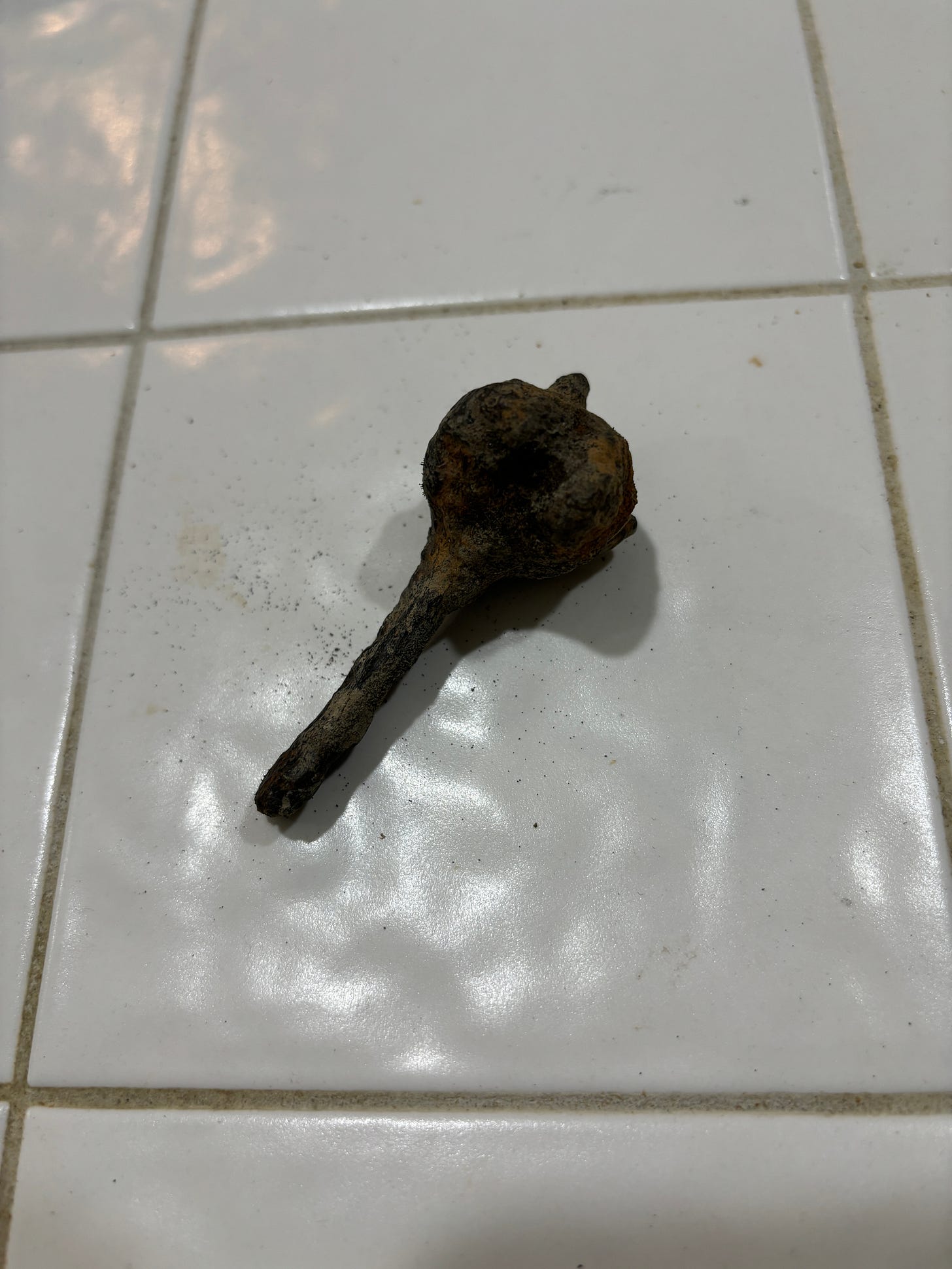
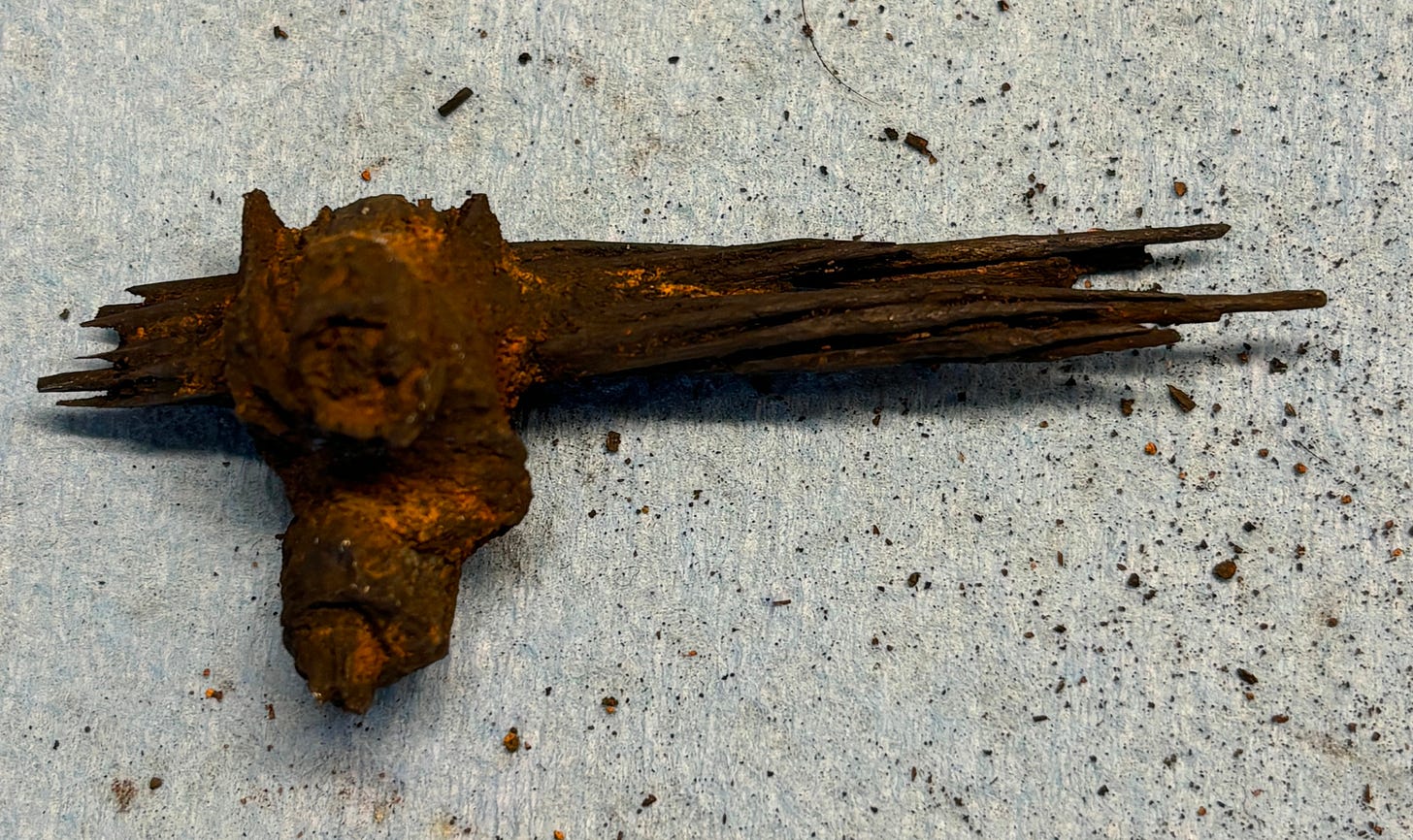
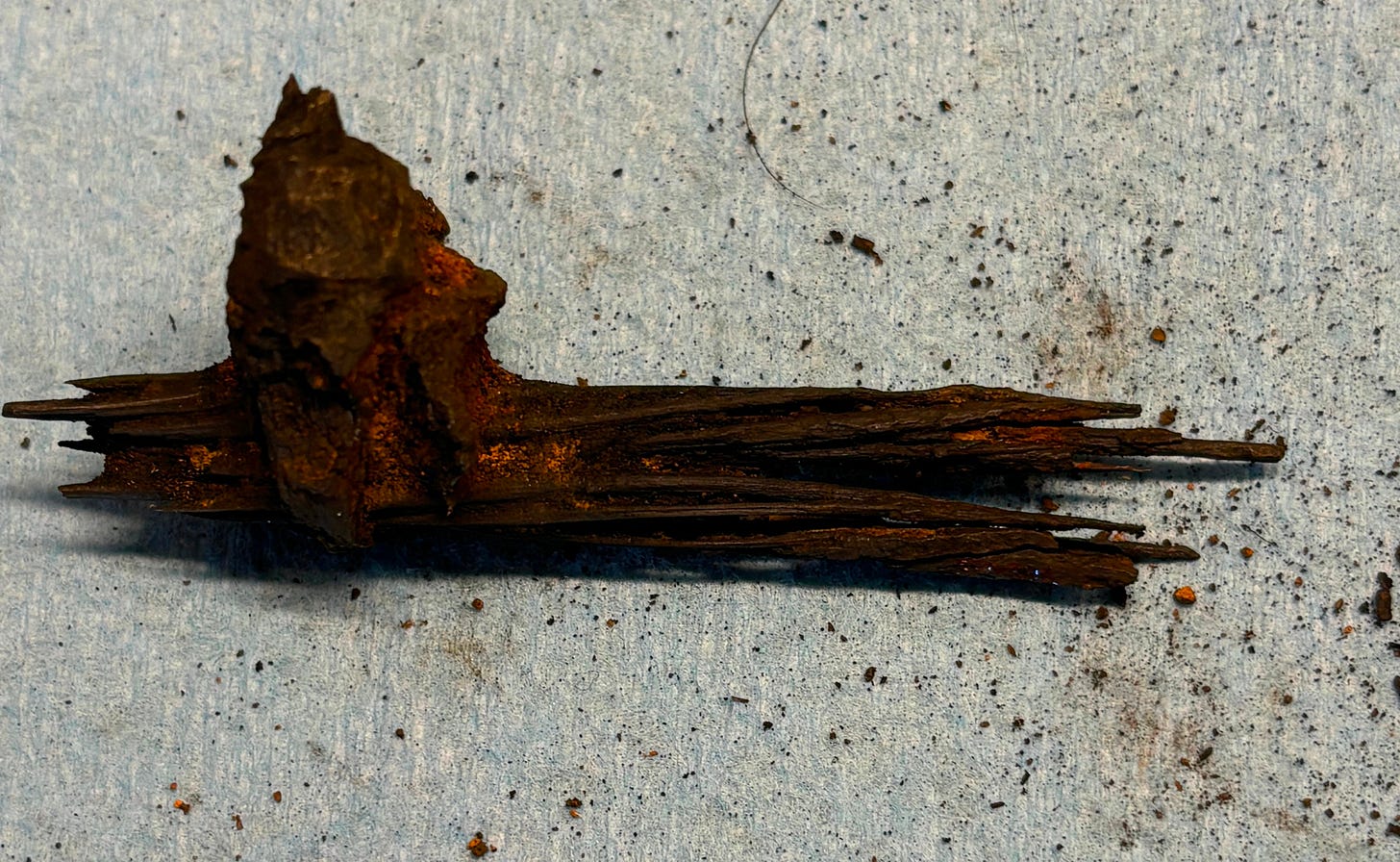
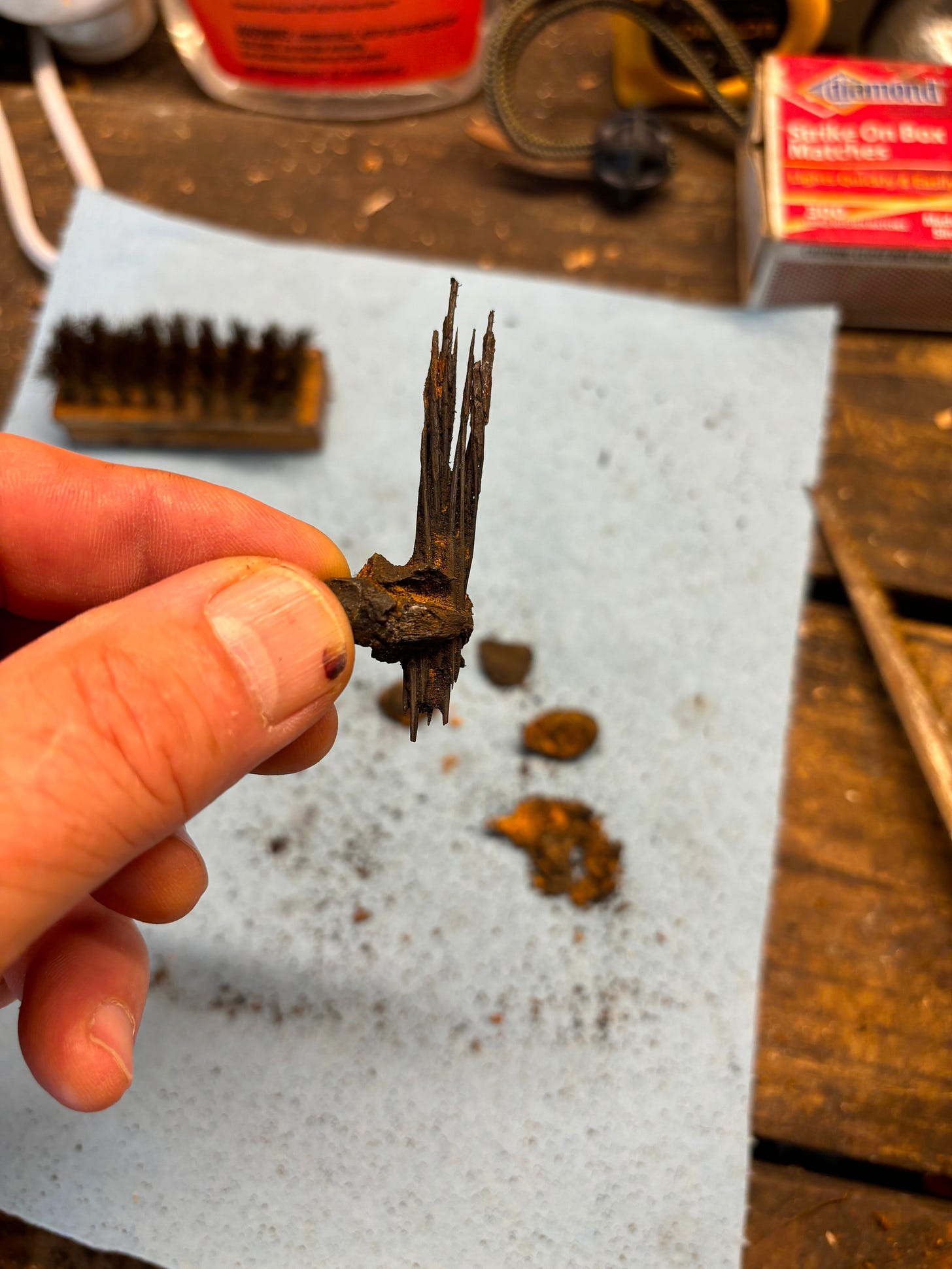
Mark- This is super fascinating and I’m so glad you shared this. I love the detailing and the before and after photos. Thanks for sharing.
First time I saw the technique used was in Grand Turk at a museum on an ancient anchor found on a wreck near South Caicos. They thought at first it was the long lost wreck of La Niña (Columbus third ship), but realized it wasn't when they also found shackles.and chains. At the time of Columbus there wasn't any slave traffic and obviously this wreck was a later wreck, hard to pinpoint because many slave ships were not registered in the Spanish ship records.